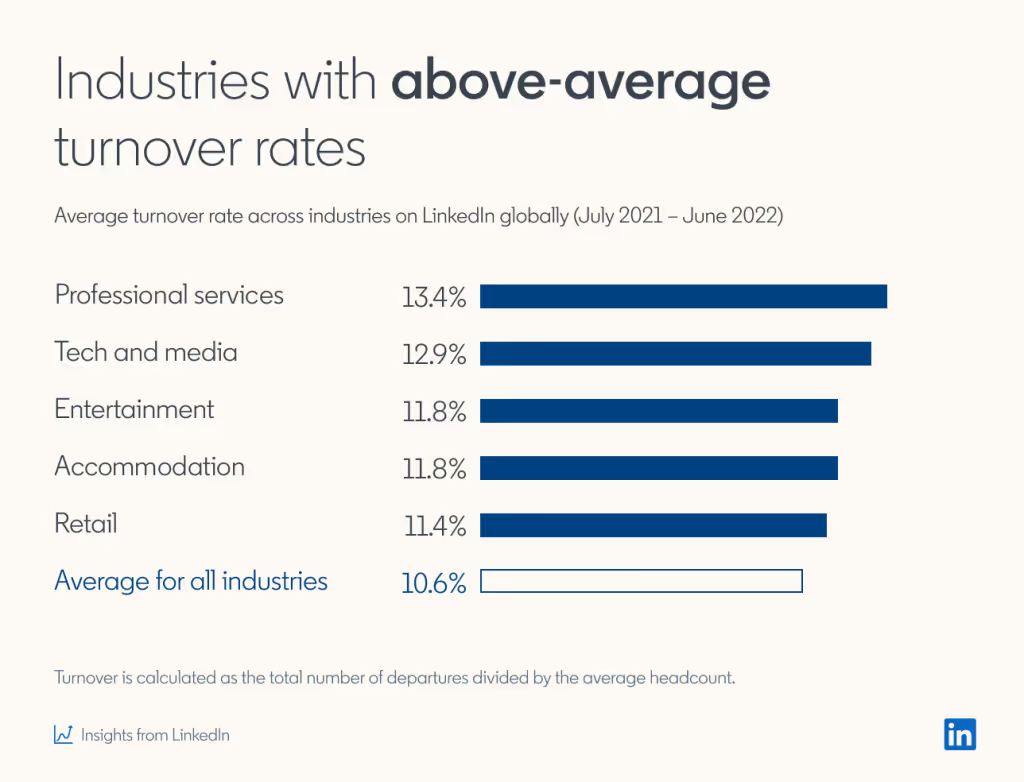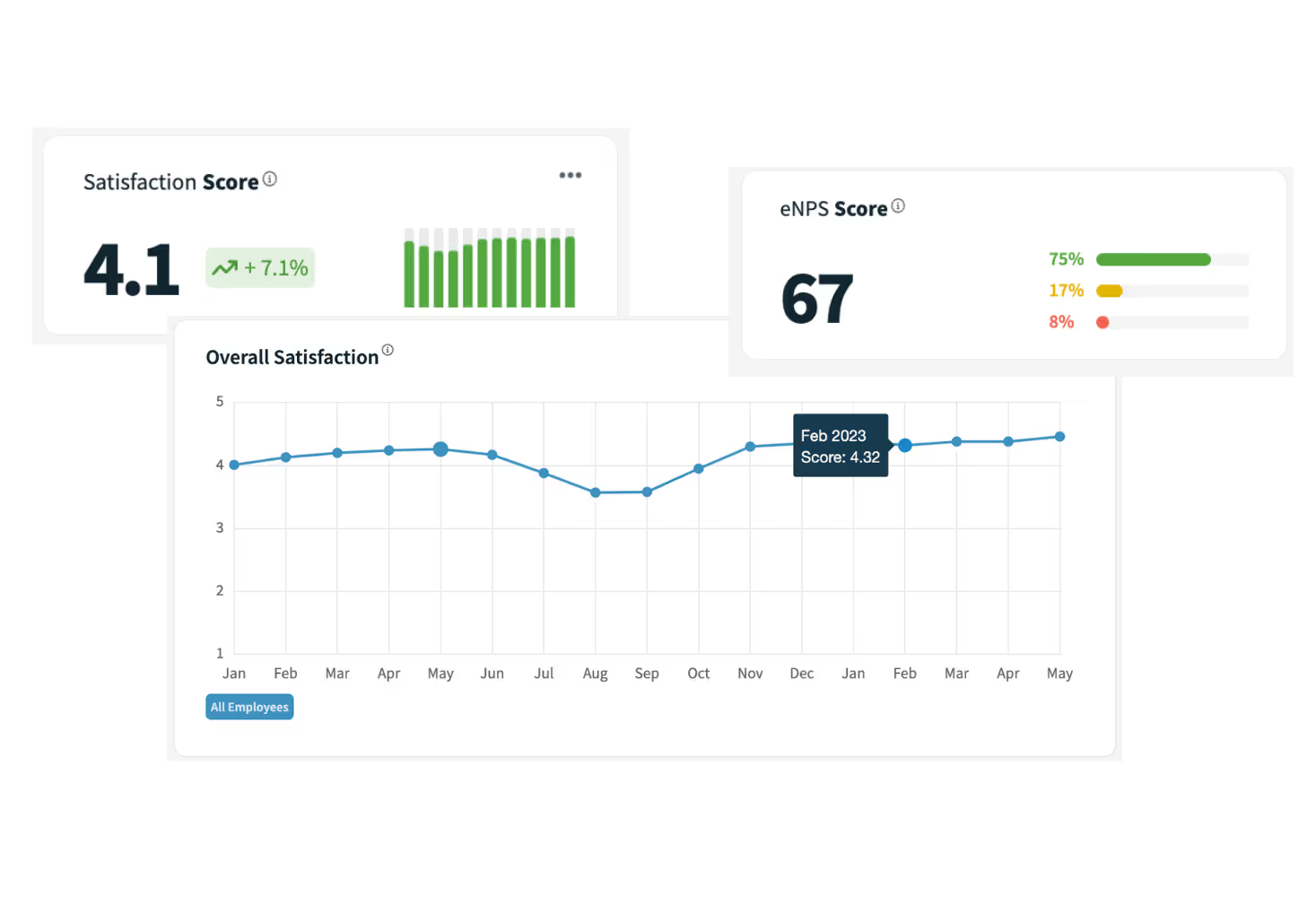How to Calculate Employee Turnover Rate
The turnover rate is the percentage of employees that leave an organization within a specified period. The employee turnover rate is a major metric that needs to be measured. It assesses how effective a company’s human resource processes are, including processes like recruitment, onboarding, performance management, and employee engagement. High turnover is detrimental to a company because more costs will be incurred in replacing exited employees vs retaining current employees. Turnover can be voluntary or involuntary; voluntary turnover is when employees choose to leave and involuntary turnover happens when employees are terminated.
Importance of Calculating Turnover Rate
Calculating the turnover rate provides insights into critical areas of a company’s HR functions and what needs improvement. Knowing your turnover rate will help you discover some challenges employees may be facing like a lack of job satisfaction, a toxic work culture, a lack of growth opportunities, or insufficient compensation. When you measure turnover and track it, you can then probe further to understand the causes.
Basic Turnover Rate Formula
The turnover rate is calculated using the following formula:

The “average number of employees” is calculated as the sum of the number of employees at the beginning of the period and the number at the end, divided by 2.
As an example, let’s calculate the turnover rate over four months in a company of 80 employees. 6 employees left and 4 new employees were hired. The turnover rate would be calculated as follows:
Number of Employees who left = 6
Average number of employees = (80 + 78) / 2 = 79
Formula:
Turnover rate = 6 6
–—----- = —----- x 100 = 7.59
(80-78)/2 79
Annual Turnover Calculation
Annual turnover is the number of employees that leave within one year. Annual turnover is calculated with the same formula as above, using the number of employees at the start of the year and the number at the end of the year. For example, if the company starts the year with 50 employees and ends with 60 employees, with 10 exited staff, the turnover for the year will be:
Monthly Turnover Calculation
The monthly turnover rate calculation uses the same formula as above. To get the monthly turnover rate, the number of employee exits in the month is divided by the average number of employees for that month and multiplied by 100.
Rolling 12-Month Turnover Calculation
The rolling 12-month turnover calculates the past 12 months each month. It “rolls over” by adding the number from the latest month and subtracting one month from the previous one-year number. It is a continuous process and differs from the annual turnover calculation, which is limited to one year and resets when a new year starts. The rolling 12-month turnover is updated monthly and provides a more up-to-date view of turnover.
The rolling 12-month turnover is calculated using the basic turnover formula, but the period must be specified. For example, if you want to calculate for June 2024, you will consider the data from July 2023 to June 2024.
What is a good turnover rate?
Lower turnover rates are better for companies of all kinds, especially those that value consistency and institutional knowledge. A low turnover rate shows that employees are happy and satisfied with their role in the company. While some employees will always leave for better opportunities, it is important to keep an eye an turnover and take steps to address high turnover. According to Gallup, a 10% turnover rate is nothing to be worried about. LinkedIn Data also revealed that the average turnover rate across all industries is 10.6%. If your turnover rates are higher, you may want to consider using performance management software to ensure employees know their career path, receive appropriate raises and promotions, and generally feel engaged.
Industry-Specific Turnover Rates

Benchmarking Turnover Rates
Benchmarking your turnover rate against other organizations in your industry will help assess how well the company is doing. It will also help you determine steps to take in your employee retention strategy and prepare for challenges related to employee turnover, such as difficulties in hiring new employees.
Factors Influencing Turnover Rates
For a company to have good turnover rates, it must have good employee retention strategies in place. These include:
Competitive Pay
According to a study by Pew Research, about 63% of people who quit their jobs leave because they feel their pay is inadequate. It’s important to meet salary expectations according to industry standards, as this will help to retain employees.
Paying Attention to Employee Wellbeing
Employee wellbeing programs are some of the ways companies retain employees today. Programs such as mental health support, financial wellness, and preventive healthcare programs make employees feel valued and help to keep them in the organization.
Flexibility at Work
Today’s workforce has shifted towards more flexibility for workers. Options for flexibility such as remote and hybrid work, compressed workweek, job sharing, and annualized hours allow employees to work flexibly and reduce burnout. Companies with flexible work options are more likely to retain their employees.
Employee Growth and Development
One of the most sought-after job perks employees desire is the opportunity to develop themselves while working. This could be through company-sponsored training and upskilling programs. Employees also want room to grow on the job and reach the peak of their careers.
Employee Engagement
Employee disengagement is usually the last phase before an employee leaves an organization. When an employee is actively engaged, they are more likely to stay. Companies that prioritize employee engagement usually have good turnover rates.
» How to Calculate Employee Retention Rate
Interpreting Turnover Data
Data extracted from employee turnover calculation can be analyzed to know:
- which categories or demographics of employees are leaving
- which departments they are leaving from
- when they are leaving
- why they are leaving
The results of this analysis can help the management make crucial decisions on retention strategies or DEI programs. For example, if employees leave a short while after coming into the company, analysis might reveal that the onboarding process needs to be improved.
Step-by-Step Guide to Calculating Turnover Rate in Excel
To calculate turnover rates in Excel, open a spreadsheet and input your data, as shown below:

The spreadsheet was created for a month, with the required data inputs. The formulas to find the average number of employees and the turnover formula are entered, which computes the turnover rate.
Average Number of Employees - 120 + 118 /2 = 119
(Cell B4+Cell B5) /2 = (Cell B9)
Turnover Rate - Number of Exits / Ave. No of Employees x 100
(Cell B6 / Cell B9) x 100 = 10.08%
Excel Formulas for Monthly and Annual Turnover
In the Annual turnover and rolling 12-month calculations, the basic turnover formula is entered into cells under columns created for each month under review. The average turnover in a year can be calculated from the sum of all monthly turnover rates divided by 12.

Tips for Accurate Data Entry
- Verify the data source and ensure it is accurate
- Use data validation tools
- Cross-check formulas and ensure accuracy
- Use forms and fields where necessary
- Double-check entries when making them
Conclusion and Best Practices
Calculating the turnover rate of employees helps in many employee-related strategic decisions. To get the turnover rates, the basic formula can be applied for monthly, annual, and rolling 12-month calculations, dividing the number of exited staff by the average number of employees within the specified period and multiplying by 100. Turnover rates should be kept as low as possible and employee retention strategies can help achieve this.

Turnover rates can be monitored quarterly or annually, depending on the company size and industry. Monthly calculations may not yield enough data to warrant significant decisions. Managers should keep in mind that turnover data plays a big role in company decisions and strategy. It is also important to apply best practices when monitoring turnover. These include making sure that records of exits are kept accurately, employee concerns are brought to the management, and retention strategies are implemented extensively. When all these are done, turnover will be kept low.


